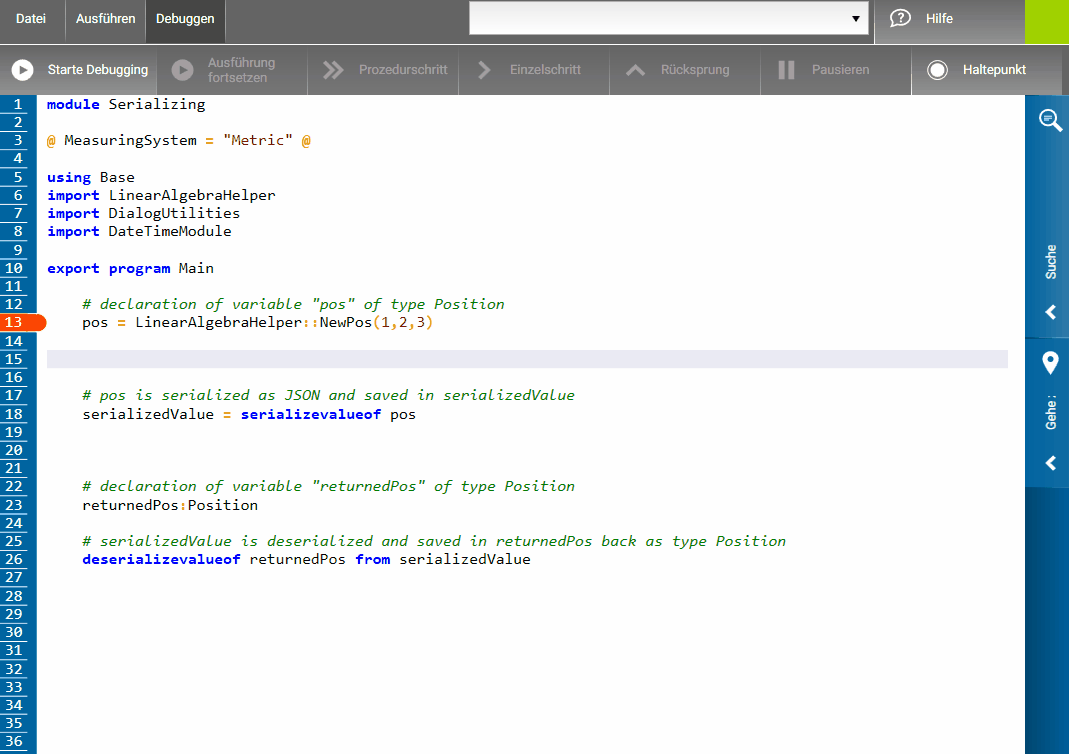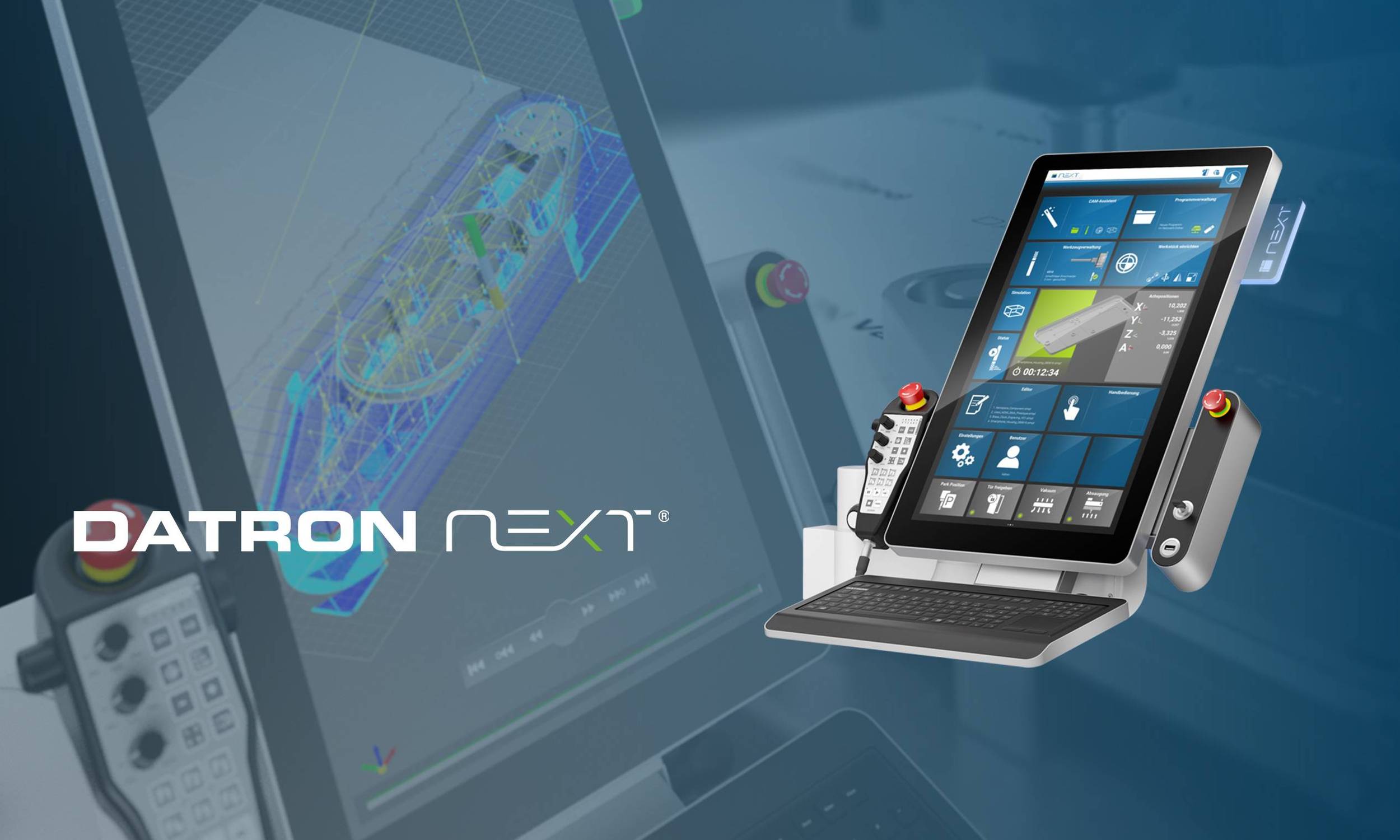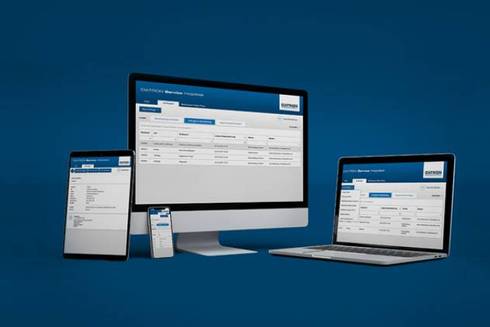- DATRON next Vision System
- DATRON MXCube performance upgrade (LookAhead buffer enlarged)
- Display of images in a SimPL programme directly in the DATRON next editor
- Provide your own SimPL programmes with documentation displayed in the integrated help using the DATRON next Editor. (SimPLDoc)
- Insert text elements into input dialogues
- Further Topics
DATRON next Vision System
€ PURCHASE OPTION
The “DATRON next Vision System” feature is used to establish the visual zero point for workpieces that cannot be measured in a tactile manner.
The system works with a smart camera which learns to detect markings in the image via image recognition and then pinpoint them. Special vision measuring cycles allowing to determine the distance between the markings and the target position are made available hereby. Thus, the workpiece’s zero point and the rotation and scale of the coordinate system can be corrected, so that the workpiece is machined in the correct position and at the correct angle.
Function Description
- By means of the integrated web interface, the smart camera easily detects the measures of an object (image 1)
- The measurement of the object can then be integrated into the milling programme via the vision system library (image 2)
- To set up the vision camera, the sub-item “Vision camera setup” has been added to the setup menu (image 3)
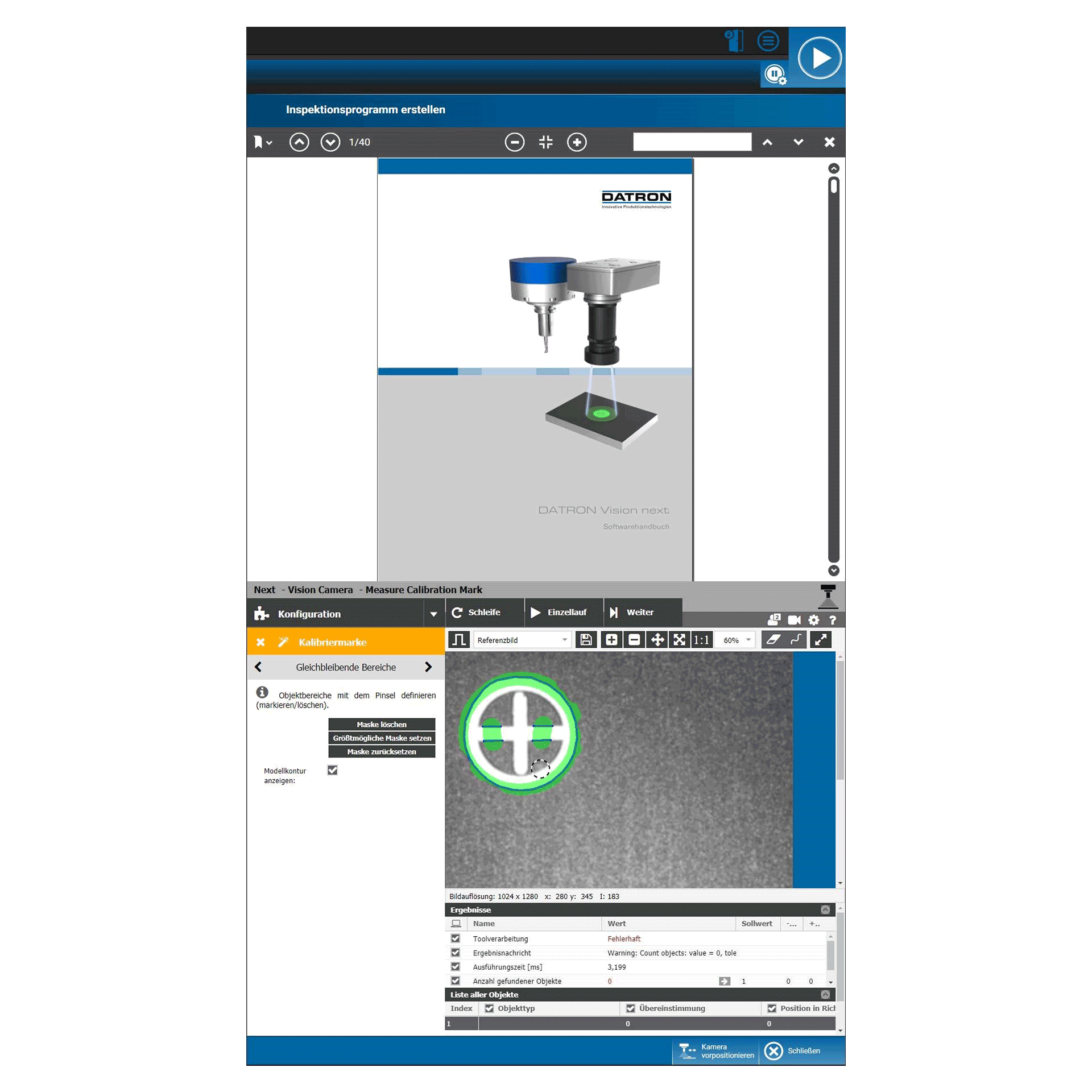
DATRON MXCube performance upgrade (LookAhead buffer enlarged)
LookAhead has been more than doubled with Version 2.17 for all MXCube customers.
In practice, this means saving up to 20% of the previously required time for free-form surfaces.
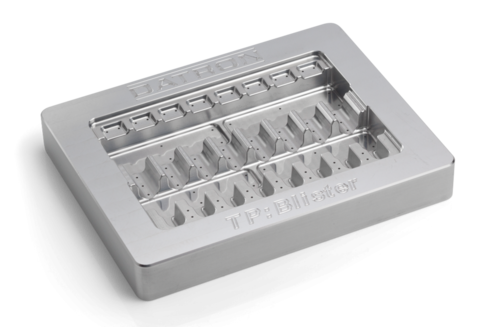
Display of images in a SimPL programme directly in the DATRON next editor
With this feature it is possible to insert images directly into a SimPL file. Subsequently, they are displayed directly in the DATRON next editor. This will allow you to take care of a wide range of tasks in the future:
- Programme documentation
- Help for setting up the machine
- Insertion of CAM generated images into the operations
Function Description
The function can be inserted into the code by means of the keyword “@image:” followed by the file name of the image:
Code Sample:
@image: ImageFileName.jpg
@
The size of the image can be controlled by the number of blank lines between the opening @image tag and the closing @ tag. A programming example is included in the Samples folder. If not, please update the Samples folder.
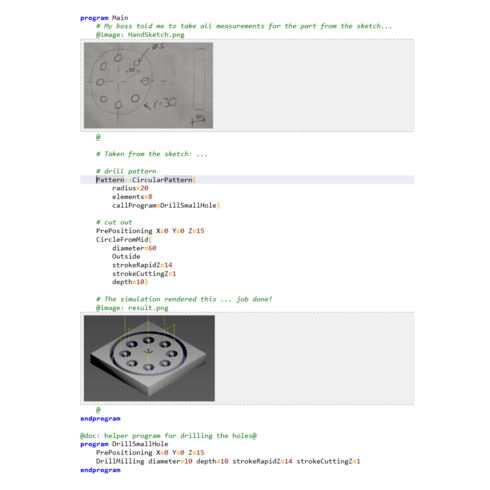
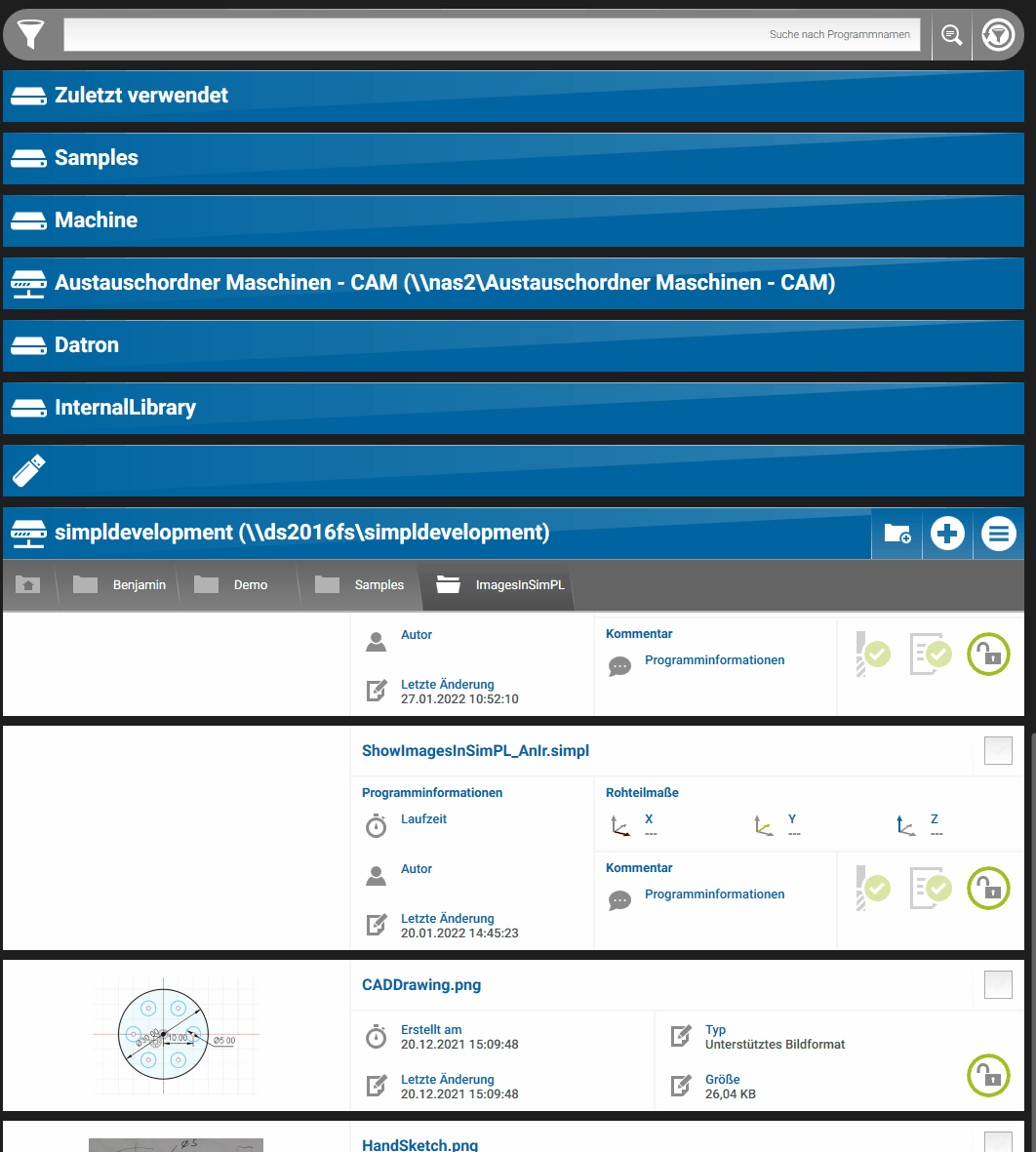
Provide your own SimPL programmes with documentation displayed in the integrated help using the DATRON next Editor. (SimPLDoc)
With the SimPLDoc function you have the option of adding a help text to your own SimPL programmes or SimPL user library programmes, as well as their parameters. This help text is then displayed in the direct help integrated into the editor.
Function Description
To add a help text, all you have to do is to write @doc: DESCRIPTION @ in the programme or after the parameters.
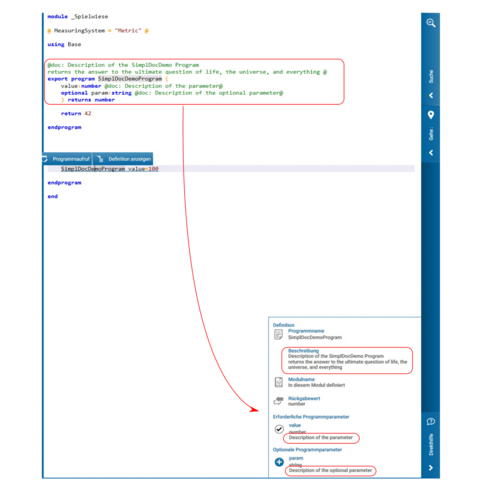
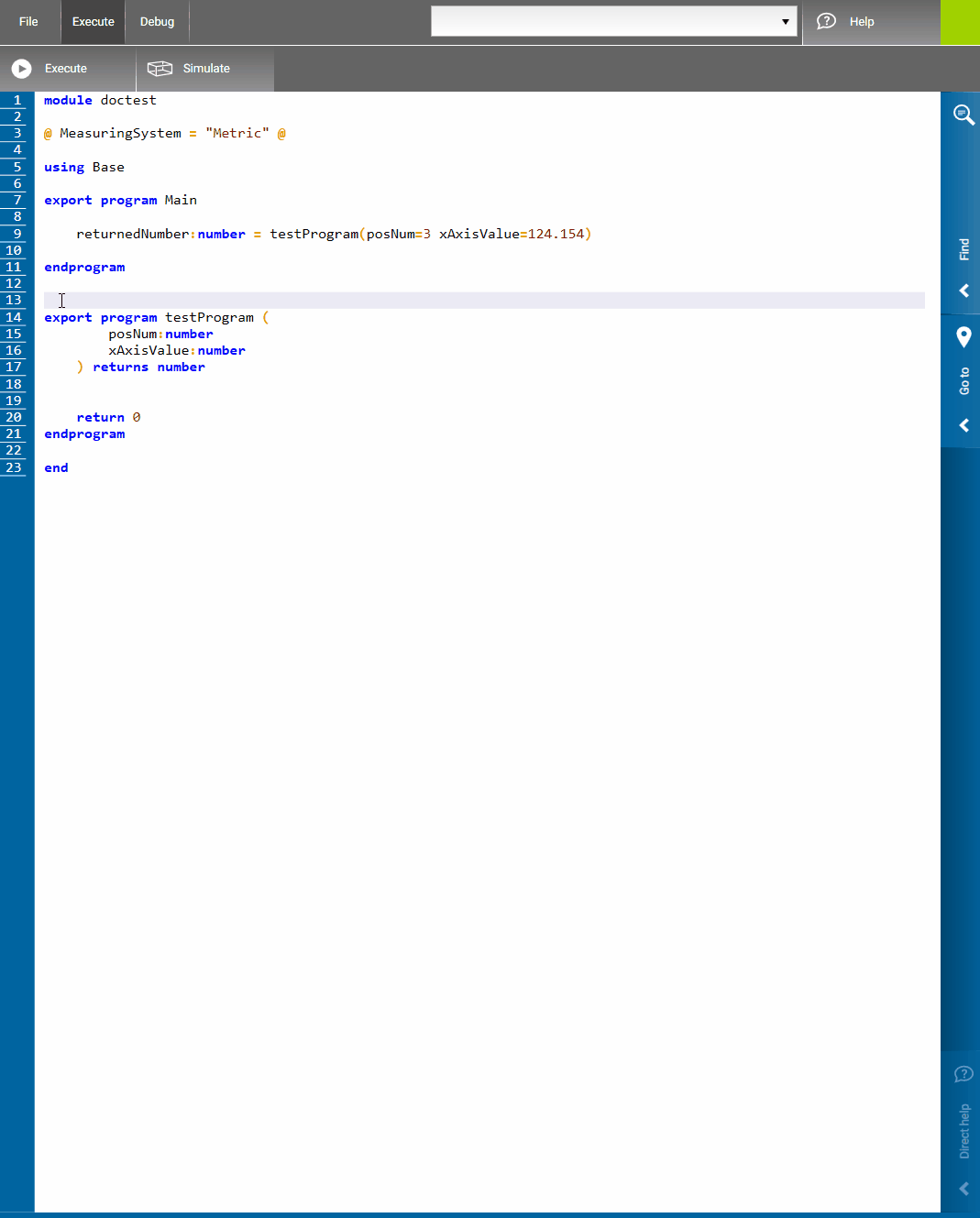
Insert text elements into input dialogues
With the innovations introduced to the input dialogue, descriptive texts can now be added to the individual input masks. These additional descriptions allow users to have a better understanding of Datron next.
Function Description
The function can easily be built into input dialogues using the new “headerText” parameter.
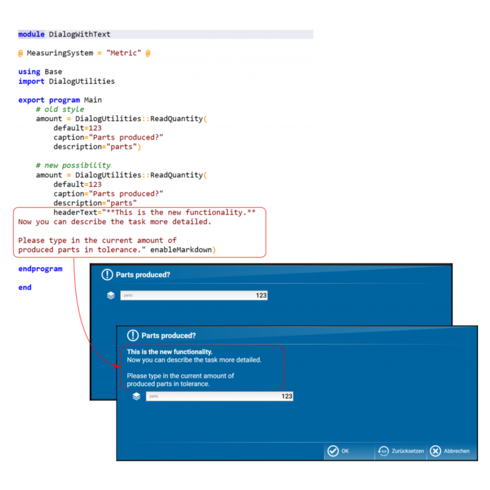
Improved performance in programme management when working with network drives
The performance of the programme management when working with network drives, especially when there are many subfolders, has been improved.
Serialization and deserialization of objects and structures
Working with complex structures has been greatly simplified by the possibility of serializing and deserializing in the SimPL editor. This is a function primarily intended for power users of our SimPL editor, since, for example, complex structures can be transferred between different machines as JSON files by serializing and deserializing them.
Function Description
All types of objects and structures can be serialized and deserialized into the previous data types without any further effort by means of the “serializevalueof” and “deserializevalueof […] from […]” functions in JSON.
